Tradycje jeździeckie i malarskie wzajemnie przenikają się od wieków. Motyw konia w sztuce jest niezmiennie inspirujący od lat. Zarówno malarze, jak i inni plastycy czerpią tak samo z pracy koni, jak i jeźdźcy. Obserwacja tych zwierząt jest wspaniałym doświadczeniem - konie są stworzeniami stadnymi, ich relacje i wzajemne przenikanie się, a także zrozumienie ich potrzeb, behawioru są badanie od niedawna, bowiem od około 50 lat. Na przestrzeni ostatnich kilku-kilkunastu lat podejście do tych zachwycających zwierząt ulega pozytywnej zmianie. Ogromna w tym zasługa autorytetów ze świata jeździeckiego, którzy uświadamiają i wprowadzają zmiany nawet na poziomach sportowych - Daria Kobiernik, jako pierwsza polska sportowczyni zrezygnowała w wyścigach z używania bata. Jej rola i starania o polepszenie dobrobytu koni jest wielka.
Konie od wieków inspirowały także wielkich twórców - przez Albrechta Durera, Leonarda da Vinci, Eugene Delacroix, czy Rosę Bonheur. Konie miały także ogromny wpływ emocjonalny na malarzy - sam Zygmunt Freud wielokrotnie przytaczał wspomnienia o spędzaniu dzieciństwa w stajni.
Zatem co możemy dowiedzieć się o nich samych, gdyby były przedstawione jedynie w sztukach plastycznych?
Spójrzmy najpierw na symbolikę konia. Zaczynając już od mitologii słowiańskiej i nordyckiej, konie spełniały ważną funkcję. Łączone były ze światem boskim (hippomancja), były dosiadane przez bogów (np. konie Odyna), a także znane są badaczom ich pochówki. Utożsamiane są z siłą, odwagą, męstwem. Znaczenie miała także ich maść - białe konie były składane w ofiary bogom, kare były utożsamiane z bogiem deszczu, gorącokrwiste z bogiem słońca. Personifikacja koni wynikała z przekonania, iż jest on najbliższą człowiekowi istotą.
Przedstawienia konia w sztuce pojawia się dużo wcześniej. Koń towarzyszył człowiekowi od około dziesięciu tysięcy lat i właśnie takie przedstawienia znajdują się w jaskini Lascaux. W starożytnej Grecji umieszczane były na wazach, rewersach monet, rzeźbione. W poszczególnych okresach trwania imperium Greków różnice w przedstawieniu konia zmieniają się znacząco - pierwsze dekoracje są zgeometryzowane, dekoracyjne, dopiero później zaczęto obserwować końskie ciało i dynamikę ruchu aż opanowano to praktycznie do perfekcji. Jednym z ciekawych przykładów sztuki klasycznej jest fragment z mauzoleum w Halikarnassos (350 r. p.n.e.). W tym dziele widzimy znaczącą różnicę pomiędzy okresami sztuki greckiej - od archaicznego, przez klasyczny aż do czasów hellenistycznych - dążenie do odwzorowania natury, poszukiwanie proporcji i anatomii.
*Equestrian and painting traditions have intertwined for centuries. The theme of the horse in art has been consistently inspiring for years. Painters and other visual artists alike have drawn as much from the work of horses as equestrians. Observation of these animals is a wonderful experience - horses create a herd, and their relationships and intermingling, as well as the understanding of their needs, and behaviour have been studied for a short time, about 50 years. Over the past few odd years, attitudes toward these delightful animals have changed positively. Huge credit for this goes to authorities from the equestrian world, who are raising awareness and bringing about changes even at sporting levels - Daria Kobiernik was the first Polish athlete to give up the use of the whip in racing. Her role and efforts to improve the welfare of horses are great.
Horses have also inspired great artists for centuries - including Albrecht Durer, Leonardo da Vinci, Eugene Delacroix, and Rosa Bonheur. Horses also had a huge emotional impact on painters - Sigmund Freud himself repeatedly cited memories of spending his childhood in a stable.
So what can we learn about them ourselves if they were only depicted in fine arts?
Let's first look at the symbolism of the horse. Starting as early as Slavic and Norse mythology, horses served an important function. They were connected with the divine world (hippomancy), were ridden by the gods (e.g. Odin's horses), and researchers were familiar with their burials. They are identified with strength, courage, and bravery. Their coat was also significant - white horses were sacrificed to the gods, black horses were identified with the rain god, and hot-blooded ones with the sun god. The personification of horses stemmed from the belief that he is the closest creature to man.
Representations of the horse in art appear much earlier. The horse has accompanied man for about ten thousand years, and such representations are found in the Lascaux cave. In ancient Greece, they were placed on vases, reverse sides of coins, and carved. In the different periods of the Greeks empire, the differences in the representation of the horse changed significantly - the first decorations are geometrized, and decorative, only later began to observe the horse's body and the dynamics of movement until it was mastered practically to perfection. One interesting example of classical art is a fragment from the mausoleum at Halikarnassos (350 BC). In this work, we can see a significant difference between the periods of Greek art - from the archaic, through the classical to the Hellenistic period - striving to reproduce nature, searching for proportions and anatomy.*
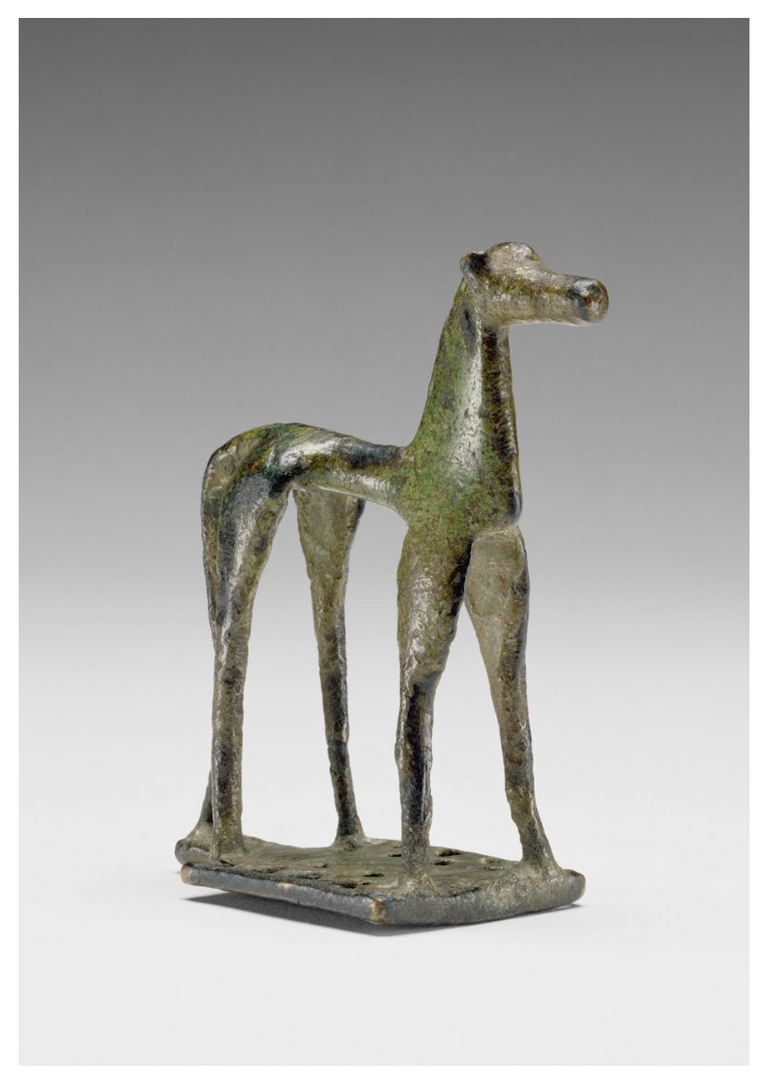
Statuetka konia, ok. 750/700 p.n.e.
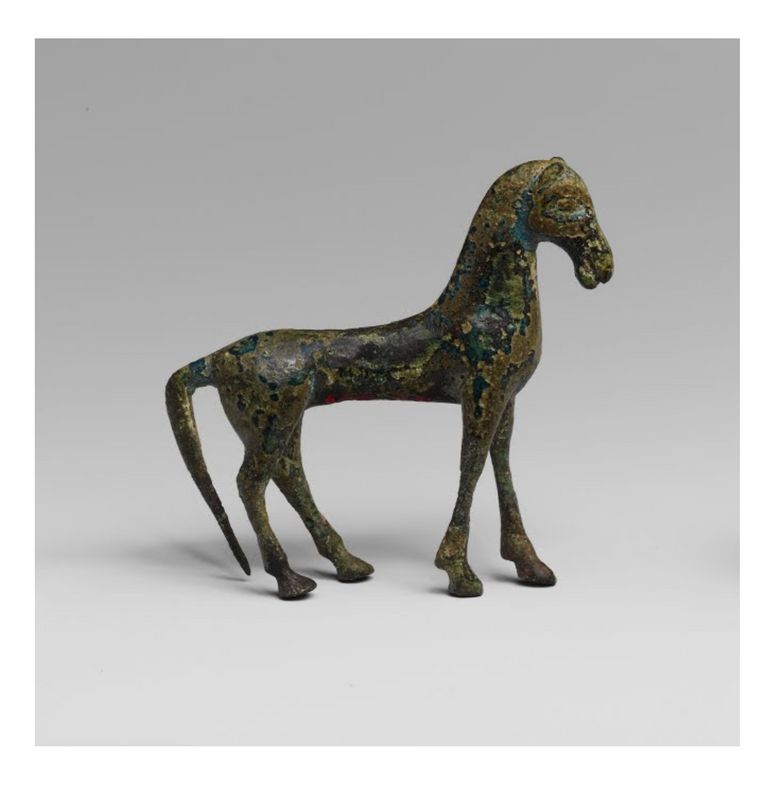
Statuetka konia, ok. szóste stulecie p.n.e.
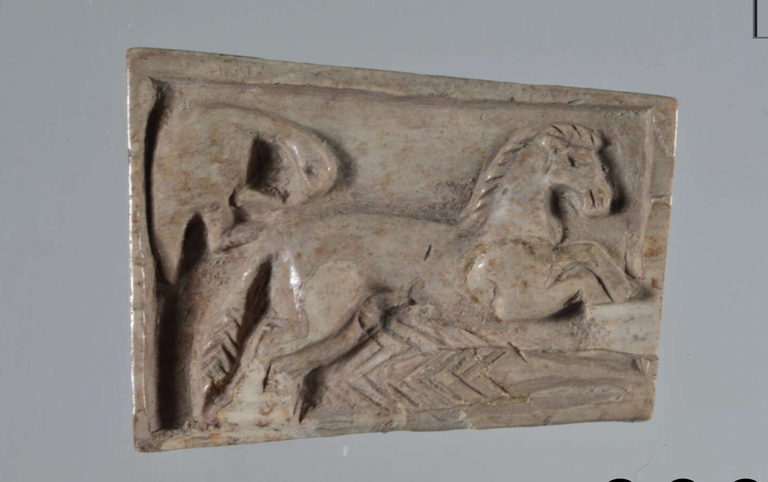
Okres archaiczny (orientalizm) (700-600 p.n.e.)
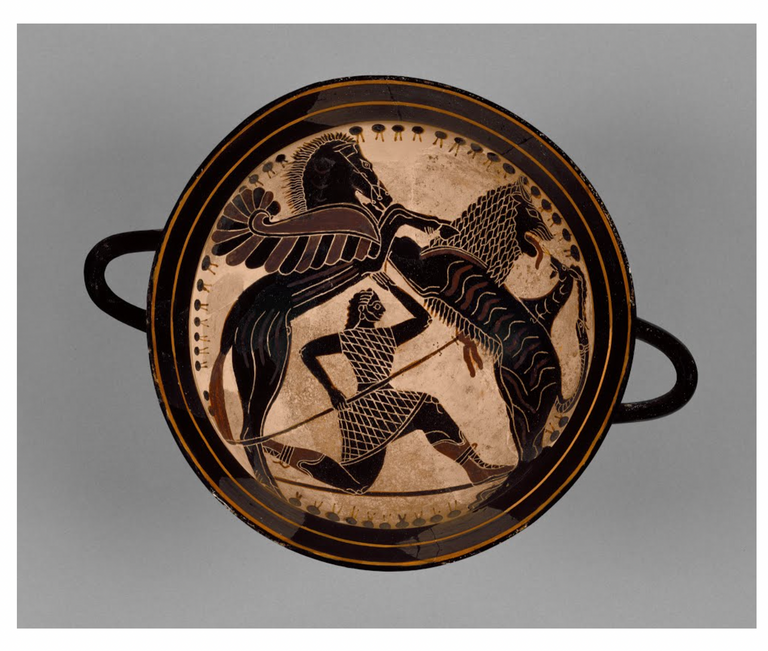
Lakońska czarna figura Kylix, ok. 570/65 p.n.e.
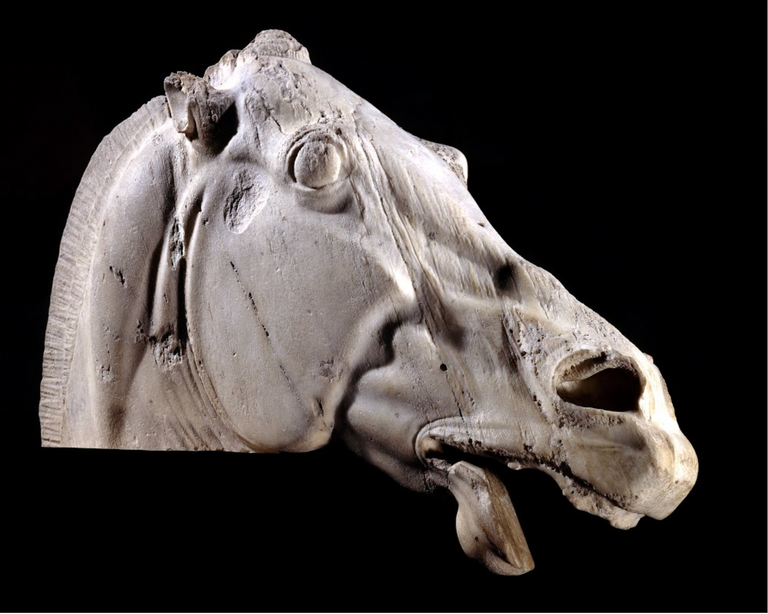
Głowa konia Selene ze wschodniego frontonu Partenonu - fidiasz Ok. 438/432 p.n.e.
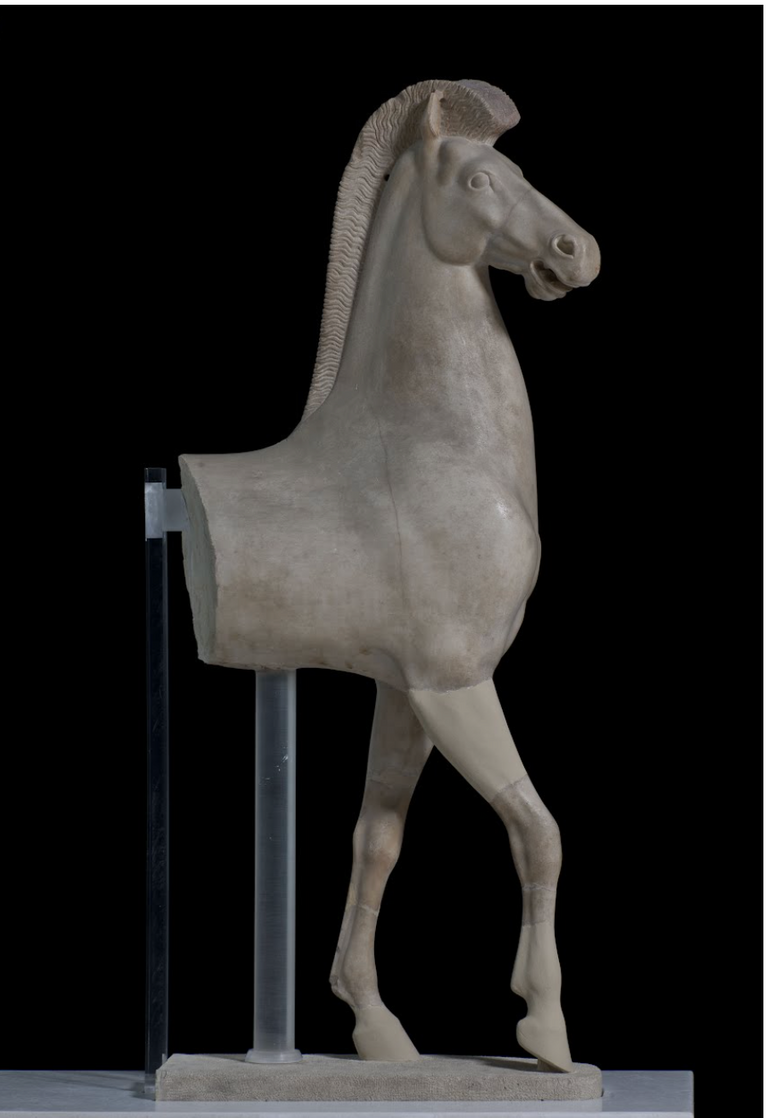
Ok. 490 p.n.e.

Fragment posągu konia z mauzoleum w Halikarnassos, ok 350 p.n.e.

Głowa konia z terakoty, ok. 3 stulecie p.n.e.
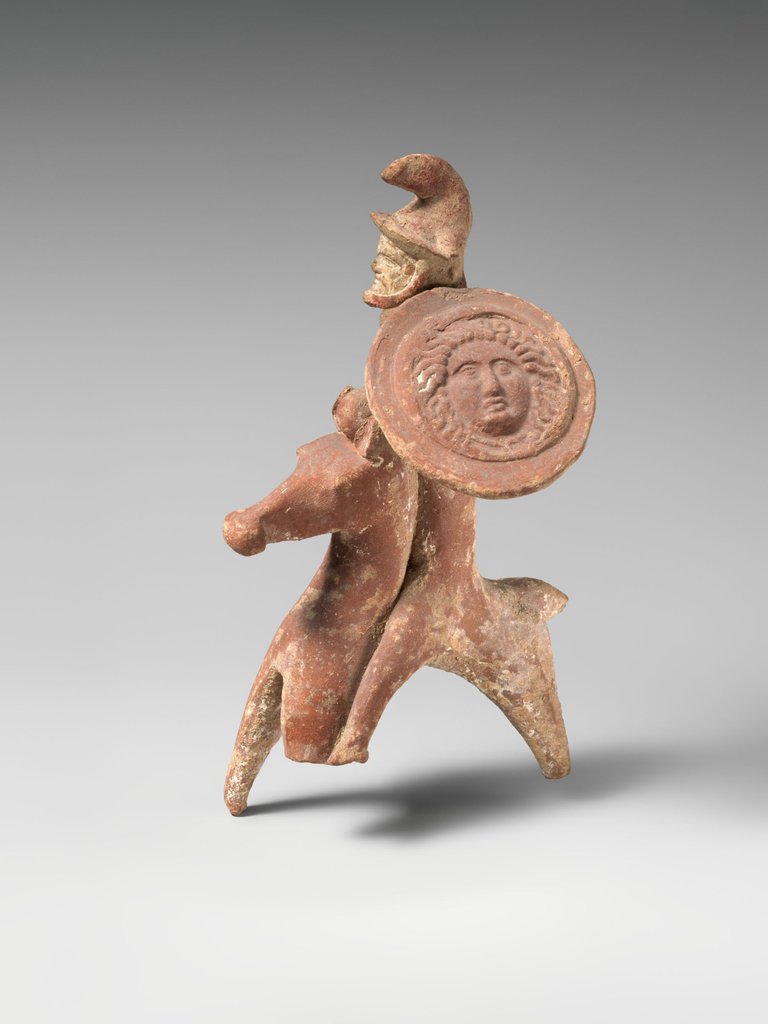
Jeździec na koniu, ok. trzecie stulecie p.n.e., okres wczesnohellenistyczny
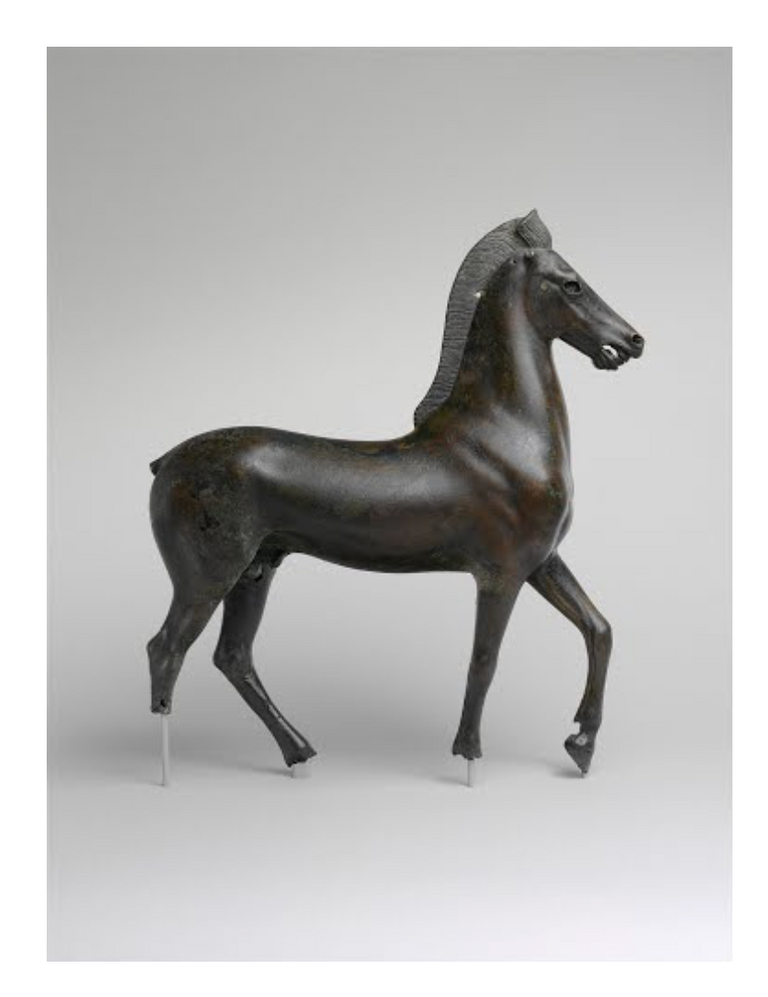
Statuetka konia z brązu, ok. 2 lub 1 stulecie p.n.e.
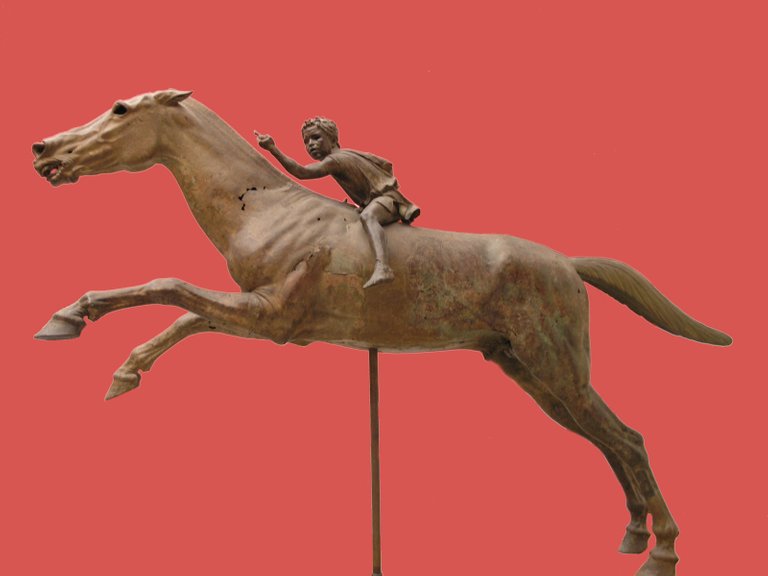
Jeździec z Artemizjon, ok 150/140 p.n.e.
Sources of pictures: MET, British Museum, Acropolis Museum
Hello @foggymeadow Thank you so much for posting in the Art Talk community. Talking about horses and art is just what this community is about. Thanks for your great selection of pictures and information.
As the moderator of the community, I would ask in addition to the name of the art that you put your source. Did you take all the pictures you put in the blog post? If not please put the sources.
Thank You! I mentioned the museums 😊
That is great, thanks!
Congratulations @foggymeadow! You have completed the following achievement on the Hive blockchain And have been rewarded with New badge(s)
Your next target is to reach 5000 upvotes.
You can view your badges on your board and compare yourself to others in the Ranking
If you no longer want to receive notifications, reply to this comment with the word
STOPTo support your work, I also upvoted your post!
Check out our last posts:
Support the HiveBuzz project. Vote for our proposal!
Świetne wprowadzenie! Brawo!
Bardzo dziękuję 💙
You're welcome
May we ask you again to support our proposal? We really need your help!
All you need to do is to click on the "support" button on this page: https://peakd.com/proposals/248. It won't cost you anything!
Merry Christmas to you and your family 🎅
Yay! 🤗
Your content has been boosted with Ecency Points, by @foggymeadow.
Use Ecency daily to boost your growth on platform!
Support Ecency
Vote for new Proposal
Delegate HP and earn more
Ho Ho Ho! @foggymeadow, one of your Hive friends wishes you a Merry Christmas and asked us to give you a new badge!
The HiveBuzz team wish you a Merry Christmas!
May you have good health, abundance and everlasting joy in your life.
To find out who wanted you to receive this special gift, click here!
You can view your badges on your board and compare yourself to others in the Ranking
Check out our last posts: